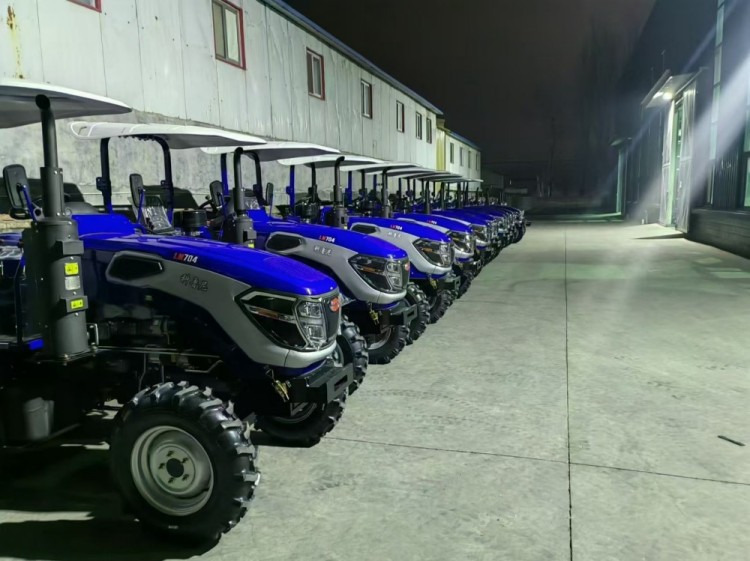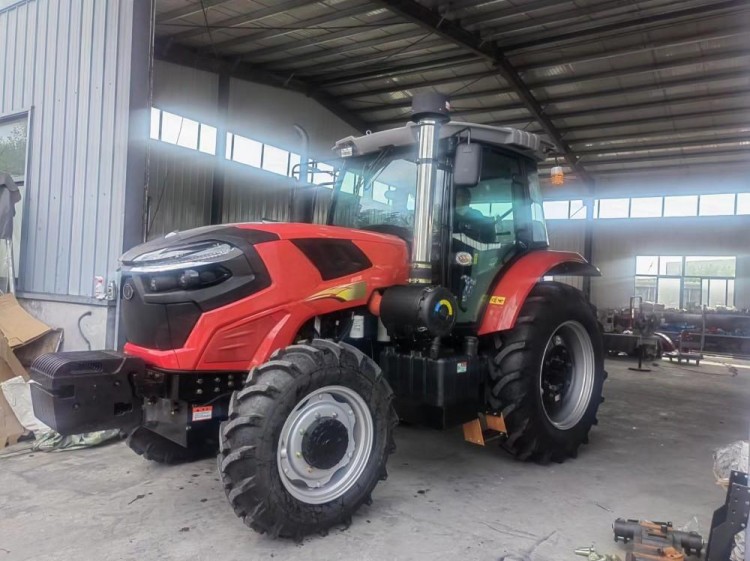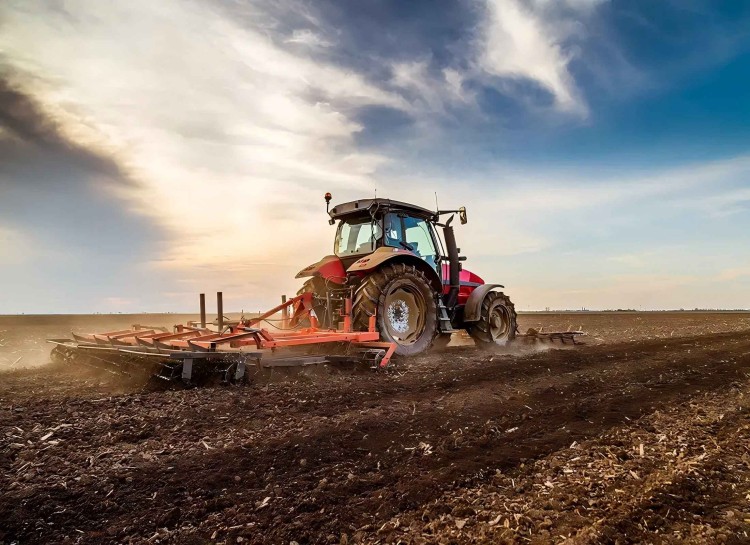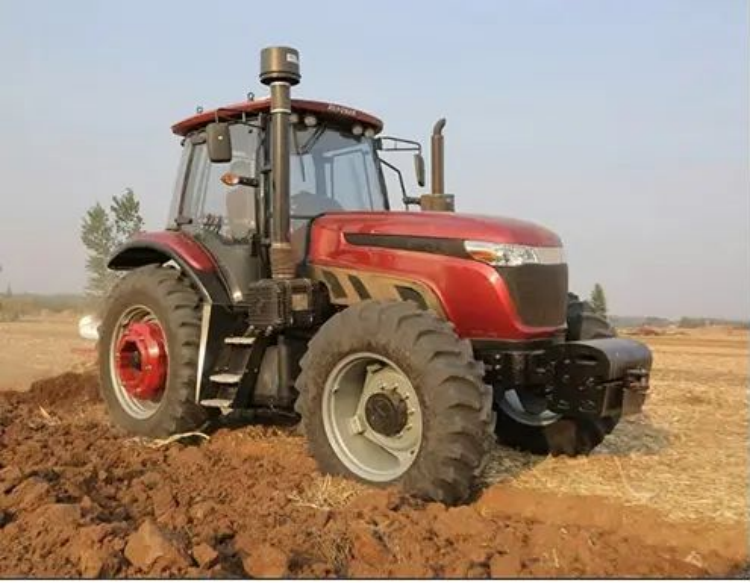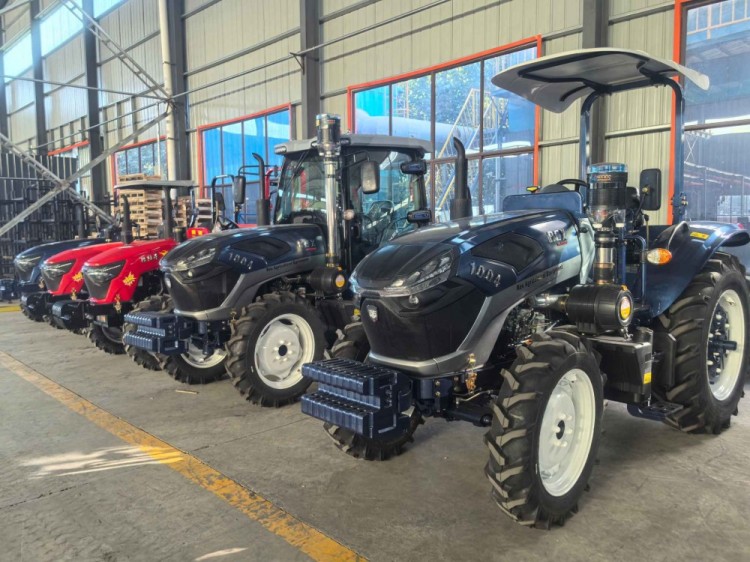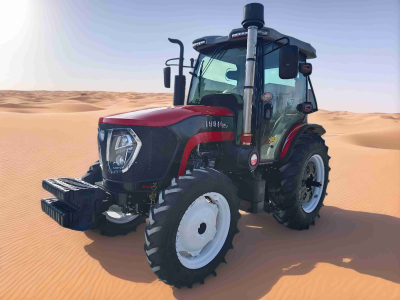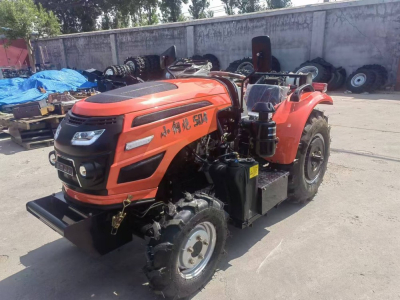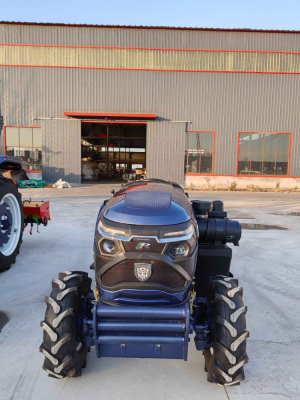Ten important developments in the field of agricultural technology in 2024
Using big data technology, integrating the impact of events, the attention of public opinion, the importance of industry development, the recognition of industry experts and other indicators, we carry out a weighted score ranking, review and summarize all aspects of agricultural mechanization, and arrive at "agricultural mechanization in 2024", ◆ ◆ 10 “In order to move into the future and discover the future, we hope that readers can leave a message in the comment area to facilitate the occurrence of similar events.” Today we are launching a series of reports, part seven: Top 10 events of influence in the field of mechanization of agricultural circulation in 2024.
1. Increased competition and restructuring of the agricultural machinery market
Increased competition in the agricultural machinery market in 2024 is the result of a combination of factors. Firstly, in 2023, the agricultural machinery market will enter a correction phase, and the real sales of four engines in some countries will decline, such as large and medium-sized tractors, corn harvesters, rice harvesters, combine harvesters, most distributors have failed to achieve their desired sales targets. With weak market demand, many businesses are facing operational pressures that will continue until 2024, making competition even tougher. Secondly, in 2024, with the massive entry into the market of some tail enterprises of the national four products, the original market structure will be further affected. In this case, companies compete for market share by lowering prices and competing for sales, causing mutual harm. Since price is one of the most direct and effective means of competition in the market, companies want to attract more customers and increase product sales by lowering prices.
Such changes in the structure of competition also affect the transformation and exit of enterprises. Due to intense competition in the market, some enterprises and distributors of agricultural machinery are faced with operational difficulties, such as high costs, increasing product inventories and liquidity difficulties, and are forced to switch or exit the market. For example, some distributors who have difficulty maintaining a traditional scale-based profitability model may suffer losses when faced with long product inventory backlogs or delays in refunds on aftermarket products and be forced to exit the market. The market space freed up by these companies is occupied by other competing companies, further increasing competition between firms for the remaining market share.
Based on market competition trends, leading hosting and distribution companies have begun to focus on increasing investment in the production and sales of mid- and high-end, large and mid-profit products. This is because the demand for such products is gradually increasing and their profit margins are relatively high, which can help businesses gain more profit in the highly competitive market. Companies that cannot adapt to market changes and continue to rely on low-quality, low-margin products will face increased pressure to survive.
2. Transformation and innovation of marketing models
In 2024, significant changes occurred in the marketing model for the circulation of agricultural machinery. The traditional agricultural machinery sales model is largely based on waiting for customers to arrive to meet the business's sales needs when market demand has been relatively stable in the past. However, with increasing competition in the market and changes in market demand, this passive sales model can no longer adapt to new market conditions.
To change this situation, many regional distribution channels have begun to modernize their marketing models. On the one hand, actively conduct online promotion, advertising, and marketing events. Thanks to Internet platforms, companies can distribute information about products to potential customers more widely, without any geographical or time restrictions. For example, using social media, e-commerce platforms and other product demos, promoting advertising campaigns and so on. Online sales can also reduce a company's marketing costs and increase sales efficiency. On the other hand, offline demonstration and promotion of products, as well as searching for potential customers in rural areas, should be intensified. The end users of agricultural machinery are predominantly rural residents. Deep in the countryside, one can directly access target customers and understand their real needs. Product demonstration allows farmers to more intuitively understand the performance and benefits of the product, thereby increasing their willingness to buy.
Strengthening customer management is also an important aspect of marketing model transformation. Businesses began to deepen contacts and communication with opinion leaders and key customers, listen to their recommendations and look for opportunities for cooperation. Opinion leaders often have great influence in rural areas, and their advice and approval can encourage other farmers to buy produce. Key accounts are important support for a company's sales. By establishing long-term and stable partnerships with key customers, companies can secure stable sales channels and sources of income.
Transformation and innovation of this marketing model is an inevitable choice for businesses to cope with the competition in the market. By combining the offline approach and strengthening customer management, enterprises can increase competitiveness in the market, expand their market share and achieve better development in a highly competitive market.
3. Changes in product quality and market space
The modernization of country IV products had a profound impact on the turnover of agricultural machinery. The country's four products have comprehensively improved product quality, reliability, durability and performance have been greatly improved. After the launch of four products in China, poor product quality problems of individual enterprises gradually appear, such as gearbox gear gaps, oil leakage at the hydraulic pipeline interface, poor consistency and so on. These problems have led to high rates of product failure in agriculture.
Due to the influence of the spread of users' reputation, the reputation of low-quality products gradually deteriorates, and potential users change their brand choice. For dealers, the primary purchasing consideration is product quality. While low-quality products are cheap, their overall operational efficiency is low due to various factors such as product failure and overall performance. Inefficiencies can result in huge economic losses for farmers, especially during peak farming periods that are well below the operating income of high-quality produce. Thus, the market space for low-quality products is becoming increasingly smaller, while sales of high-quality products are steadily increasing.
Trends in product quality and market space reflect the growing market focus on product quality. With the development of agricultural mechanization, farmers have increasingly high demands on the quality of agricultural machinery products, and they prefer to buy products with reliable quality and good performance. It also encourages enterprises to continuously improve product quality, strengthen product research and development and production management to meet market demand. For turnover enterprises, more attention should be paid to screening and quality control of products, choosing to cooperate with manufacturers of high-quality products, thereby increasing their competitiveness in the market.
4. Problems and transformation of the profit model
In the field of agricultural machinery circulation, traditional profitability models face enormous challenges. According to information from an industry seminar, several leading distributors in different regions of China said that the average gross percentage rate for agricultural machinery distribution is about 10%. After deducting various expenses, the net profit margin is only 2 - 3%. Additionally, some companies have overly detailed traditional channels and terminal-intensive channels, making it difficult for distributors to continue with traditional scale-based profitability models.
In this case, the dealer takes a number of measures to increase profits. For example, divest from brands that are experiencing losses and that have no hope of turning around in the short term to avoid investing in those brands and causing even greater losses. Setting purchasing thresholds for items that are not profitable and prone to backlogs can reduce the demand for advances and credits and ensure that multiple costs are tightly controlled. With these measures, the distributor can optimize the product structure, reduce inventory risks, increase the efficiency of use of funds, and strive to increase operating profits.
At the same time, some dealers are also exploring new profit models. For example, working with a business to improve profitability by sharing resources, reducing costs, and other means. Some strong dealers actively train and develop the quality of team members, strengthen team management, standardize process systems, and improve team competitiveness. By increasing the professionalism and efficiency of your team, you can better serve customers, thereby increasing customer satisfaction and loyalty, bringing in more business and profit for the business.
This change in profit model is an inevitable requirement for agricultural machinery businesses to adapt to market changes. In a highly competitive market with limited profits, companies can only survive and grow in the market if they continuously innovate and improve their profit model.
5. Big problems with after-sales service
In 2024, with the increase in the number of machines in the country, the after-sales service of agricultural machinery is facing greater challenges. In the spring and autumn of 2023, agricultural work is mainly carried out by state three machines, and only some national four machines are involved in the work. However, at that time, a serious problem was identified of a lack of resources to service agritech businesses and distributors.
The main problem is that after-sales personnel do not have sufficient service skills to meet first-line service needs. Amid rising demand for services, some companies have even moved shop assemblers to the front line of service, but are still struggling to solve the problem. Service response, service accessories and other aspects do not meet the requirements of flexibility and timeliness, speed and efficiency are low, cannot achieve customer satisfaction.
To overcome these challenges, manufacturers need to collaborate to increase service personnel training and improve on-site after-sales service skills. For example, maintenance personnel can become familiar with the technical characteristics and maintenance methods of the four national machines through training courses, technology exchange activities, etc. At the same time, it is necessary to stock sufficient quantities of proprietary and general service components to ensure that they meet the needs of on-site service. Establish a reliable accessory supply system to ensure timely delivery of accessories. In addition, it is necessary to strengthen the service response mechanism by establishing a customer service hotline, online service platform and other means to timely understand users' service needs and solve service problems.
After-sales service is an important part of the turnover of agricultural machinery. Good after-sales service can improve user satisfaction and business competitiveness in the market. Therefore, enterprises should pay attention to the problems faced by after-sales services and take effective measures to solve them.
6.China International Agricultural Machinery Exhibition will be held in Changsha
The 2024 China International Agricultural Machinery Exhibition will be held from October 26 to 28, 2024 in Changsha, Hunan Province. It is Asia's largest agricultural machinery exhibition and one of the world's five largest agricultural machinery exhibitions, which is of great importance in the field of agricultural machinery circulation.
Firstly, the exhibition provides a platform for agricultural technology companies to demonstrate their products and technologies. Domestic and foreign enterprises producing agricultural machinery gathered, more than 2,000 exhibitors. Businesses showcase their new products and technologies at trade shows to increase brand awareness and influence. For example, the company showcased its latest agricultural machinery products such as new tractors and combines, as well as the application of new technologies such as intelligence, energy saving and environmental protection in agricultural machinery products.
Secondly, the exhibition promotes the development of production, research and applied cooperation along the entire chain of agricultural engineering. The development of agricultural machinery requires the cooperation of all parties, including research institutes, manufacturing plants, distributors, users and so on. At the exhibition, the parties conducted personal exchanges and cooperation to jointly promote the high-quality development of the agricultural machinery and equipment industry. For example, research institutes work with businesses to turn research results into practical products; Distributors and manufacturing companies are negotiating cooperation and expanding sales channels.
In addition, the exhibition contributed to the flow of high-quality resources to the entire society in the field of agricultural machinery and equipment. Through the advertising and promotional role of the exhibition, to attract more investors, technicians and others attention to agricultural technology, so as to breathe new vitality into its development. For example, some investors have opened up opportunities for the development of agricultural machinery through exhibitions, which has led to increased investment in agricultural machinery; Technological personnel are attracted by the innovative development of the agricultural machinery industry and join agricultural machinery enterprises.
Finally, the exhibition also hosted a number of related conferences, such as the China Smart Agriculture Conference, China Livestock Conference and others, as well as national conferences organized by the agricultural and rural sectors on national core strategies, advanced technologies in agriculture and high-quality development agricultural mechanization. Forums and seminars are also organized for scientists, experts and scientists involved in agricultural technology. These conferences and workshops will provide policy guidance, technical support and development ideas for developing agricultural machinery flows.
7. Trends in the development of agricultural technology are gradually changing
With the acceleration of the process of modernization of agriculture, the development trend of the agricultural machinery industry is also changing. The circulation of agricultural machinery includes the sale, leasing, maintenance and disposal of agricultural machinery. In recent years, with the support of the government policy of agricultural mechanization and intelligence, the distribution network of agricultural machinery has been constantly expanding, and the service model has been constantly introduced.
On the one hand, digitalization and platforming have become important directions for future development. Through the establishment of a national big data platform for agricultural machinery, the resource allocation of agricultural machinery can be optimized and the match between supply and demand can be achieved. For example, the use of big data platforms makes it possible to understand the demand for agricultural machinery in different regions, thereby rationally allocating agricultural machinery resources and increasing the efficiency and intelligence of agricultural production. At the same time, with the use of IoT technologies in agriculture, remote monitoring and predictive maintenance of the flow of agricultural machinery can be realized. Enterprises are using IoT technologies to monitor the operating status of farm equipment in real time, proactively detect potential faults and perform maintenance to reduce downtime and improve the availability and reliability of farm equipment.
On the other hand, ecology and circular economy are attracting more and more attention in the field of agricultural machinery circulation. One trend has been to promote recycling and environmentally friendly maintenance of agricultural machinery. For example, recycling and dismantling used farm equipment and remanufacturing and reusing reusable parts can not only reduce plant costs, but also reduce resource waste and environmental pollution. At the same time, the application of environmentally friendly maintenance technologies can reduce pollutant emissions during maintenance processes and ensure the sustainable development of agricultural machinery maintenance.
This shift in development trend reflects the active study of the agricultural machinery circulation industry in accordance with the requirements of modern agricultural development. Companies must adapt to this trend, strengthen digital construction, focus on environmental protection and develop the circular economy to improve their competitiveness and ability to achieve sustainable development.
8. Opportunities and problems of the used agricultural machinery sales market
In 2024, the circulation of used agricultural machinery and equipment is both an opportunity and a challenge in the field of agricultural machinery circulation. With the change in the supply and demand relationship of domestic agricultural machinery from "scarcity" to "surplus", a market for used agricultural machinery gradually emerged.
From an opportunity perspective, if the used farm machinery circulation market is healthy and smooth, it will boost new machine sales. For some farmers or small farmers with limited funds, used farm equipment is a cost-effective option. Purchasing used agricultural machinery can reduce their initial investment costs and at the same time satisfy their basic agricultural production needs. In addition, the development of the used agricultural machinery market can inject new vitality into the entire agricultural machinery circulation market and expand the market space.
However, the market for used agricultural machinery also faces many problems. First, the quality of used agricultural machinery varies greatly, and there are no uniform quality standards and testing methods. This creates significant risks for consumers purchasing used farm equipment because they are concerned about the quality of the equipment they purchase. Secondly, after-sales service for used agricultural machinery is relatively weak. Due to the complex origins of used agricultural machinery, many devices have exceeded the warranty period, and after-sales service responsibilities are difficult to determine, making it difficult for consumers to receive timely and effective solutions when they encounter problems during use.
In order to promote the healthy development of the used agricultural machinery market, it is necessary to establish and improve relevant laws and regulations and market regulation mechanisms, develop uniform quality standards and testing norms, and strengthen the after-sales service system to enhance consumer confidence in the used agricultural machinery market.
9. Consequences of the policy of subsidizing the purchase of agricultural machinery
In 2024, the policy of subsidizing the purchase of agricultural machinery will continue to influence the agricultural machinery circulation sector. In the past, agricultural machinery procurement subsidy policies have played an important role in promoting the development of the agricultural machinery market. For example, subsidy policies stimulated sales of agricultural machinery until 2023, increasing the overall planting and harvesting mechanization rate from 34% in 2004 to 73% in 2022. The mechanization rate in the northern plains is above 80%, but in the southern hilly areas it is still below 50%, indicating that the agricultural machinery market still has great scope for development under the subsidy policy.
In 2024, although some regions will further reduce subsidies on some products under the Country 4 project, subsidy policy will remain an important factor affecting agricultural machinery sales. On the one hand, subsidy policies can reduce farmers' costs for purchasing agricultural machinery and increase their motivation to purchase. Even if the subsidy is reduced, farmers can save some money. Subsidized prices are more attractive for some higher-priced agricultural machinery products. On the other hand, the subsidy policy also affects the product structure and market strategy of the company. Under the subsidy policy, enterprises will increase investment in R&D and production of subsidized products in order to gain a larger market share.
However, subsidy policies also create some problems. For example, this leads some companies to over-rely on subsidies while ignoring product quality and innovation. Incentivized by subsidy policies, some companies lower product quality requirements in order to receive more subsidies, which affects the healthy development of the market. In addition, adjustments to subsidy policies may lead to certain fluctuations in the market, for example, reductions in subsidies may affect sales of certain products.
10. Differences in development and potential of regional markets
Different regional markets have differences in development and potential in the field of circulation of agricultural machinery. For example, in the northeast region, which is an important agricultural production area in China, there is a high demand for agricultural machinery, especially products that can adapt to cold climates and large-scale agricultural operations. In addition, the development level of agricultural mechanization in the Northeast region is relatively high, the distribution network of agricultural machinery and the after-sales service system are relatively perfect, which provides a good basis for the development of agricultural machinery enterprises in the region.
However, in the southern hilly regions, due to the difficult terrain and scattered arable land, higher demands are placed on the adaptation of agricultural machinery. At present, the rate of mechanization is still less than 50%, which is significantly lower than in the northern lowland regions. This also means that the agricultural machinery market in the southern hilly areas has huge potential. It is necessary for agricultural machinery enterprises to develop and promote small, flexible and multi-functional agricultural machinery products suitable for use in the southern hilly areas, and strengthen the construction of the circulation and after-sales service network in the region, so as to open up the agricultural machinery market in the southern hilly areas.
The structure of agricultural production in Northern China is diversified, and there is a demand for various types of agricultural machinery. The competition in the agricultural machinery market in the region is also very fierce, enterprises need to constantly improve product competitiveness and service level to take a place in the agricultural machinery market in North China. The differences in the development and potential of different regional markets require that agricultural technology enterprises take full account of the actual situation in different regions when locating the market, develop targeted market strategies to achieve the sustainable development of enterprises in different regional markets.
Author: Hanzhong carpenter
Source: Agricultural Machinery News Network

